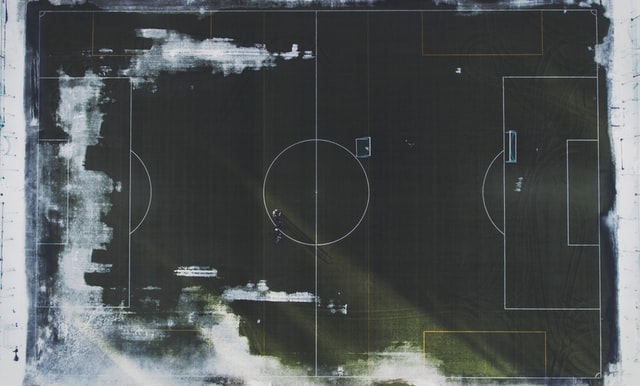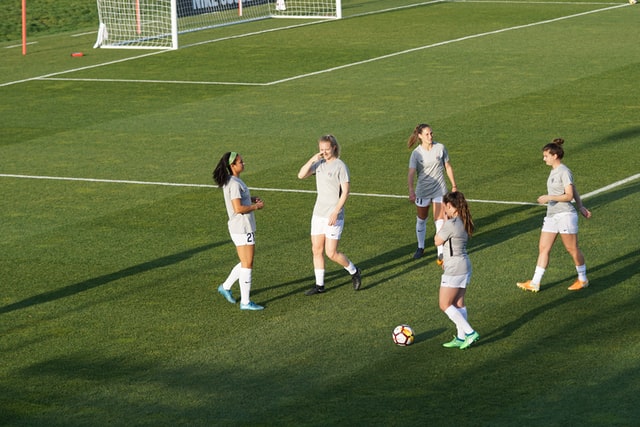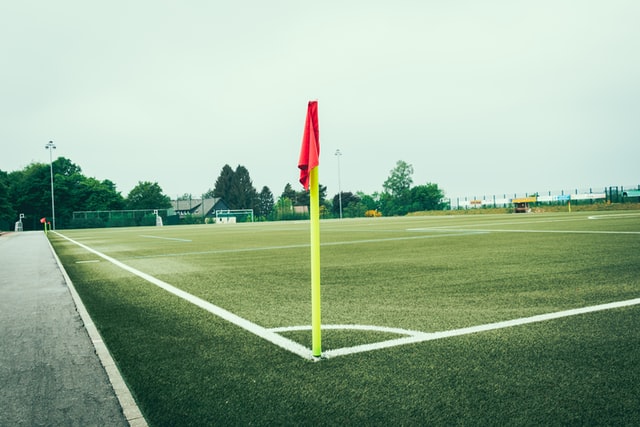As you already know, soccer fields are covered with grass. Since parts of the grass used in soccer fields are made up of many colors (white, shades of green, etc…), some people think that the soccer grass used is not real.
If you’re wondering whether the grass used in these big professional soccer fields is real or not, here’s your answer.
Many soccer fields are made up of real grass that covers the entire area of the field. In general, soccer fields can either be made up of real glass, artificial grass, or a hybrid of both. However, the hybrid grass will most probably be the future of professional soccer fields.
You’ve got your answer, but if you’d like to learn more about each type of grass used on the soccer fields, then stick around.
Natural grass was used heavily in the early years of soccer
When soccer first started, clubs didn’t have a lot of money to build fancy soccer stadiums by themselves. The teams had to rely on public places to play soccer.
During that time, Natural grass was the most common method used to cover the public soccer fields.
Natural grass was heavily used on soccer fields in the 20th century.
The natural grass used on soccer fields requires a lot of maintenance and work. It also caused a lot of problems whenever the weather wasn’t suitable for the grass.
For example, soccer matches suffered a lot if the weather was snowy during the match. The snow would damage the grass which in turn affects the soccer games that were going to be played or are already being played on that field.

Effective techniques were later used to heat up the grass in case the weather was very cold and these techniques worked very well and made playing soccer in extreme weather conditions possible.
Today, there are many soccer fields with pure natural grass that get maintained on a regular basis using excellent technologies. However, more and more soccer fields are moving towards the hybrid grass system which FIFA also considers to be natural grass. More on this later in this article.
Introducing the artificial turfs to cover soccer fields.
Due to the early problems that soccer faced from the usage of natural grass on the soccer fields, some soccer fields transitioned from real grass to artificial ones.
Artificial grass doesn’t require a lot of maintenance as the real grass does. The artificial grass also works very well in different weather conditions. With that said, artificial grass was a great way to cover the soccer fields.
In 2004, FIFA decided to adopt the artificial grass fields as an official way to cover soccer fields in an attempt to make sure that soccer fields are always ready to host matches no matter what the weather conditions are.
However, artificial grass has its own problems too. Injuries were much more likely to happen on artificial grass than on real grass. Thus, artificial grass made soccer a little bit less safe than it usually is.
Many people objected to the usage of artificial grass on soccer fields. For that reason, hybrid grass was introduced which I will talk about in a minute.
But before I do that, I would like to mention that objections against artificial grass has led FIFA to BAN artificial fields during the 2023 women’s world cup.

Instead, the women national teams will be playing on fields either made of completely natural grass or a hybrid grass.
What exactly is the hybrid grass for soccer fields?
As the name implies, the hybrid grass is a mix of natural grass and artificial fibers made to reinforce the real grass.
The artificial grass fibers are first placed in the soil, then the natural grass is seeded into the soil too. When the natural grass grows, it’s roots interweave with the artificial grass fibers which helps the natural grass become stronger.
With that said, hybrid grass is one of the best types of grass used on soccer fields these days
For your knowledge, FIFA officially categorizes the hybrid grass to be natural grass as stated in the linked article above.
Such a categorization makes sense because when the soccer players are playing on hybrid grass, they will be mostly touching the natural grass instead of the artificial one. The artificial fibers will exist only to strengthen the natural grass on the field.
So to conclude this article.
Most of the soccer fields of the biggest soccer clubs and countries are made of completely real / natural grass or a hybrid grass. Hybrid grass is considered to be natural grass by FIFA because the players will be mostly in contact with the real grass rather than the artificial one.

